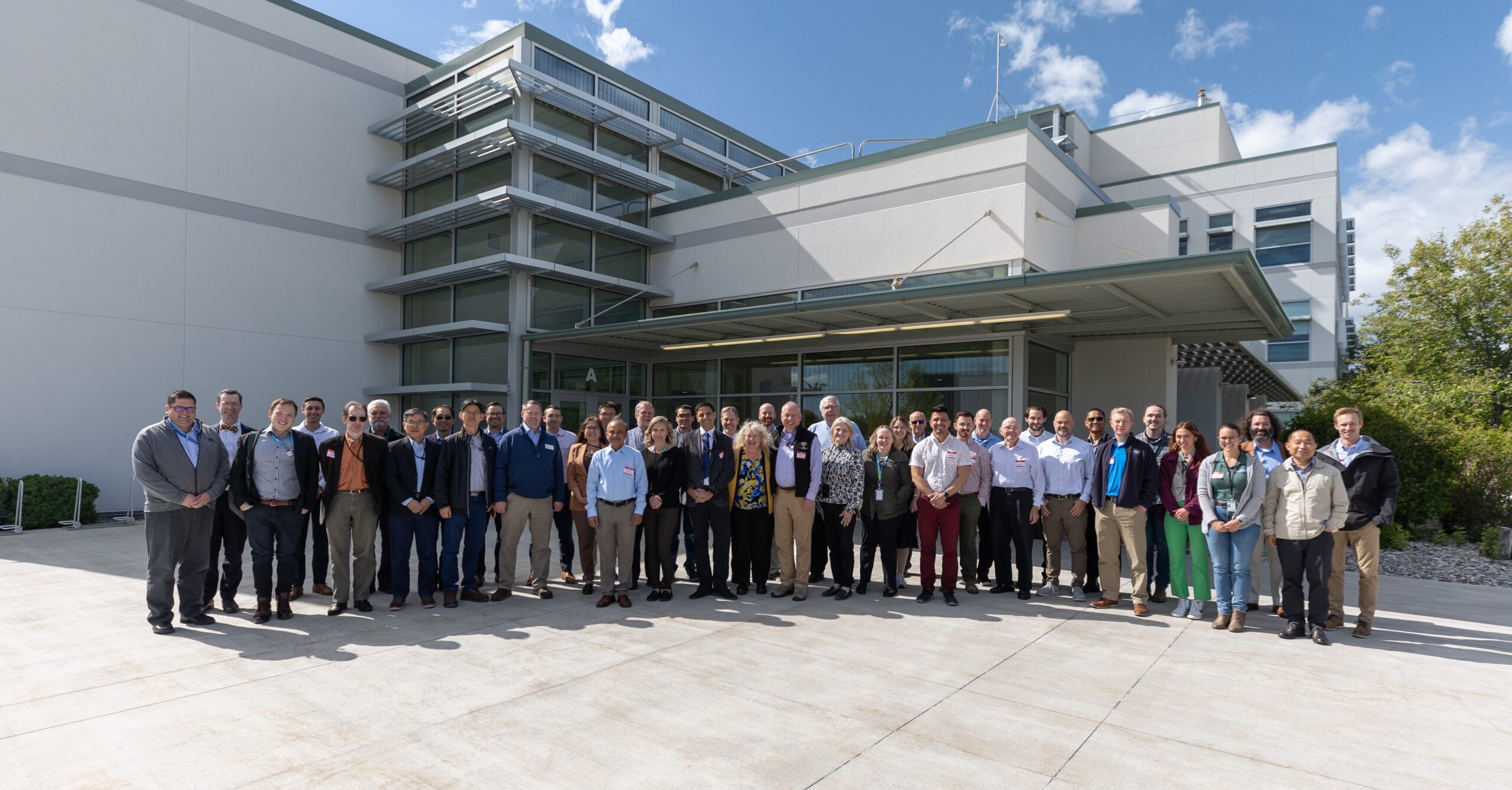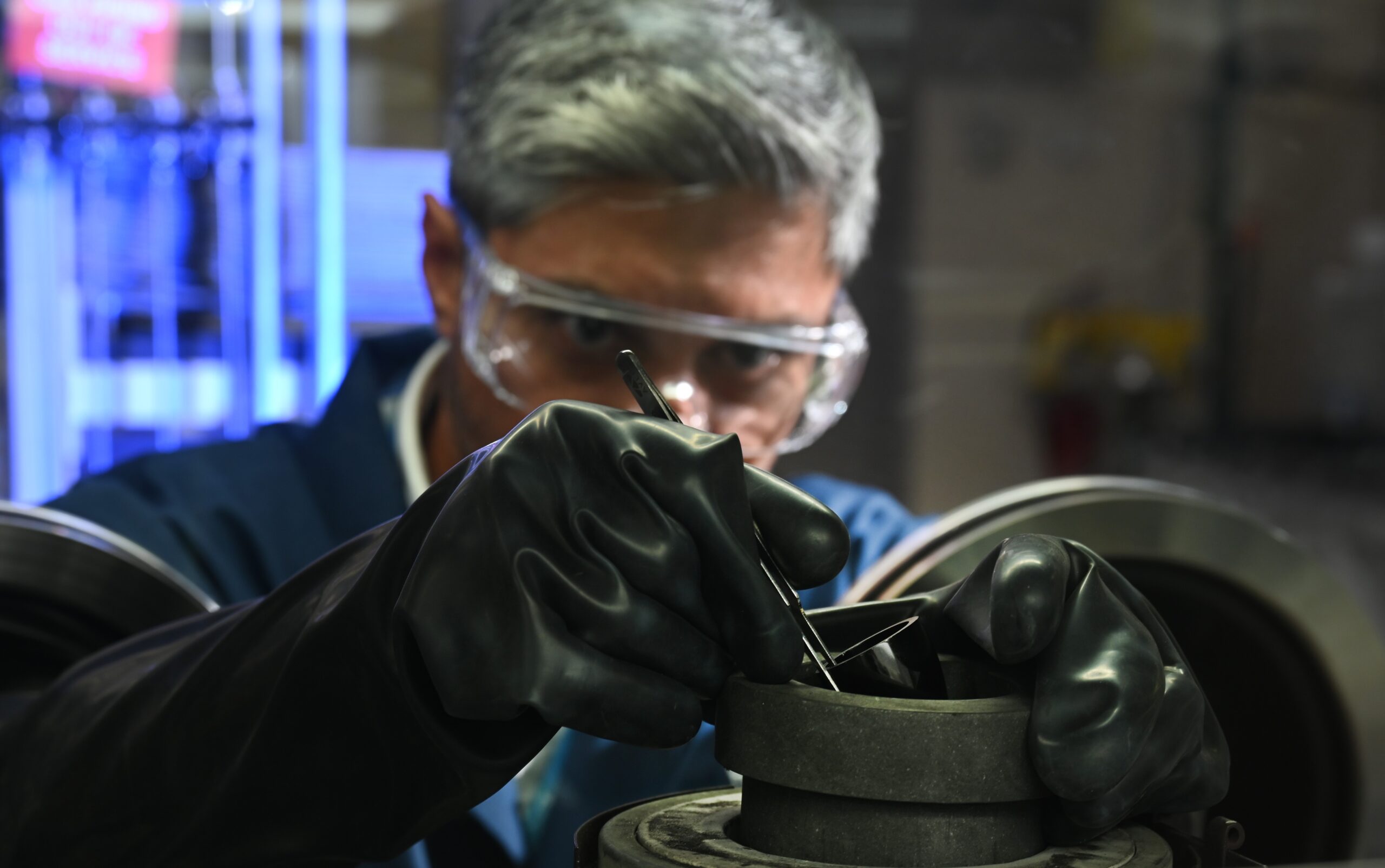
On a crisp spring morning, experts from across the country gathered at the Idaho National Laboratory (INL) Meeting Center for a first-of-its-kind event. The topics of this two-day meeting aimed to open the door to a new generation of widely applicable technologies. The key? Molten salt.
John Carter, INL’s advanced molten salt technology manager, and Piyush Sabharwall, manager of thermal hydraulic analysis of irradiation experiments, opened the Molten Salt Technologies – Powering the Future workshop by welcoming and introducing participants. In attendance were stakeholders from industry, academia, and other national laboratories – all hoping to bring their projects to life. A range of focus areas were represented, from solar energy and carbon capture to rare earth metal extraction and developing sensors for harsh environments, to name a few.
“We want to learn from each other and better understand how we can work together to advance environmentally friendly molten salt-based technologies for our country’s clean energy future,” Carter said. “We want to identify common challenges and create new partnerships to address them.”
A deep insight into what is possible
In the search for sustainable energy and industrial process solutions, molten salt technologies have shown particular promise. Researchers have identified functions for transporting and storing thermal energy, producing advanced materials, and other engineering methods. But to better understand the behavior and properties of molten salt, INL is studying it in laboratories and demonstration plants. There is also a renewed push to explore how the lab can meet industry research and development needs.
The first day of the workshop featured technical sessions that provided an overview of the progress of molten salt research, the status of existing molten salt programs, and how they are expected to impact future technologies. Basic research was presented by Alexi Khechfe, a molten salt engineer at Commonwealth Fusion Systems.

“It was really helpful to see some of the resources being developed in the industry for devices that can operate in harsh salt environments,” Khechfe said. “We want to develop the first commercial fusion reactor, and it was interesting to see some of the test facilities as we continue to develop our own reactor.”
INL’s interest in molten salt reactors enables a variety of industries to advance their technologies as well. Industry partners studying topics such as manufacturing, harsh environment sensors, material interactions, and chemical characterization could benefit from leveraging INL’s capabilities and a network of researchers associated with molten salts.
“The devices we make are designed to survive in molten salt environments, but I could see how others deal with the same problems we do,” said mechanical engineer Chris Ramirez, who works for Sporian Microsystems, which specializes in developing high-temperature sensors.
The role of the INL in the introduction of new technologies
On the second day of the event, Holly Powell, director of operations for Gateway for Accelerated Innovation in Nuclear, a federal grant initiative that advances nuclear energy technologies toward commercialization, presented a presentation. Powell explained how participants can use the program to collaborate with INL and access unique research capabilities.
Participants also got a first-hand look at molten salt research during a tour of INL’s facilities, where researchers work on the structure and measurement of salts while developing methods to chemically monitor them under various conditions.

“The experience of leading the lab raises questions that we need to answer, such as, ‘How do we solve this problem and how do we address this issue in our own research?'” said Kent Millington, general partner of Utah Green Energy Technologies.
Participants discussed the complexity of bringing these technologies to market – a paradoxical promise of return on investment in a research area where there are still many unanswered questions.
“Everyone has specific needs and concerns that we can address as we work together,” said Michael Stoddard, head of the Office of Nuclear Energy’s Molten Salt Reactor Research Program. “It’s amazing to see the innovativeness of all the scientists here at INL – building these instruments from the ground up and developing these amazing technologies to address some really big challenges related to molten salt.”
Setting the course for future research
At the end of the workshop, the desire to continue the dialogue and build a stronger network was clear. “I think it would be really great for us to reach out and see the lessons learned, the things that worked and the things that didn’t work,” Khechfe said, echoing the desire of many others to stay in close contact.
“This workshop was designed to accelerate the development of solutions to some of the most pressing technological challenges of our time,” Carter said, “and we look forward to holding it again.”




